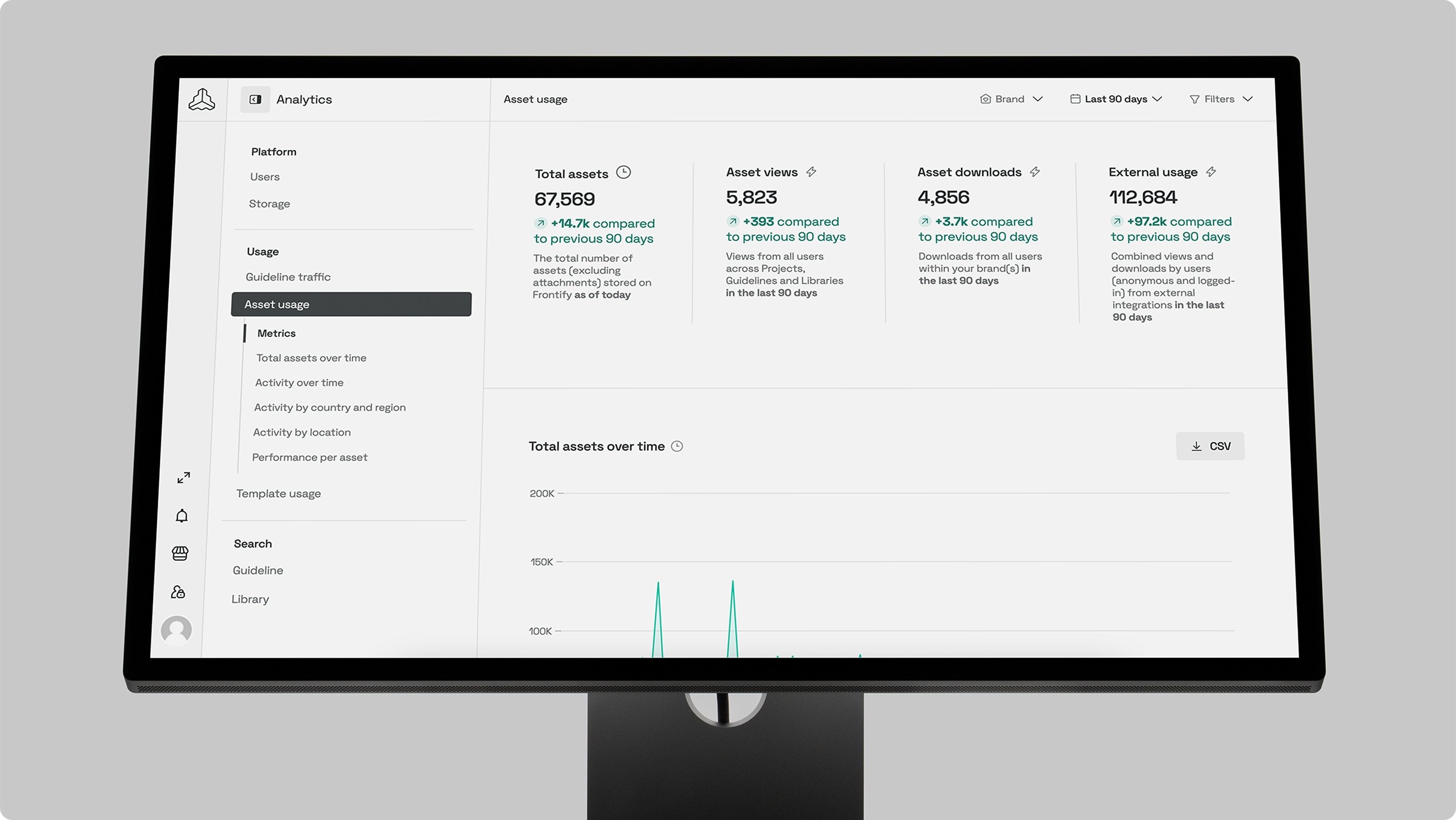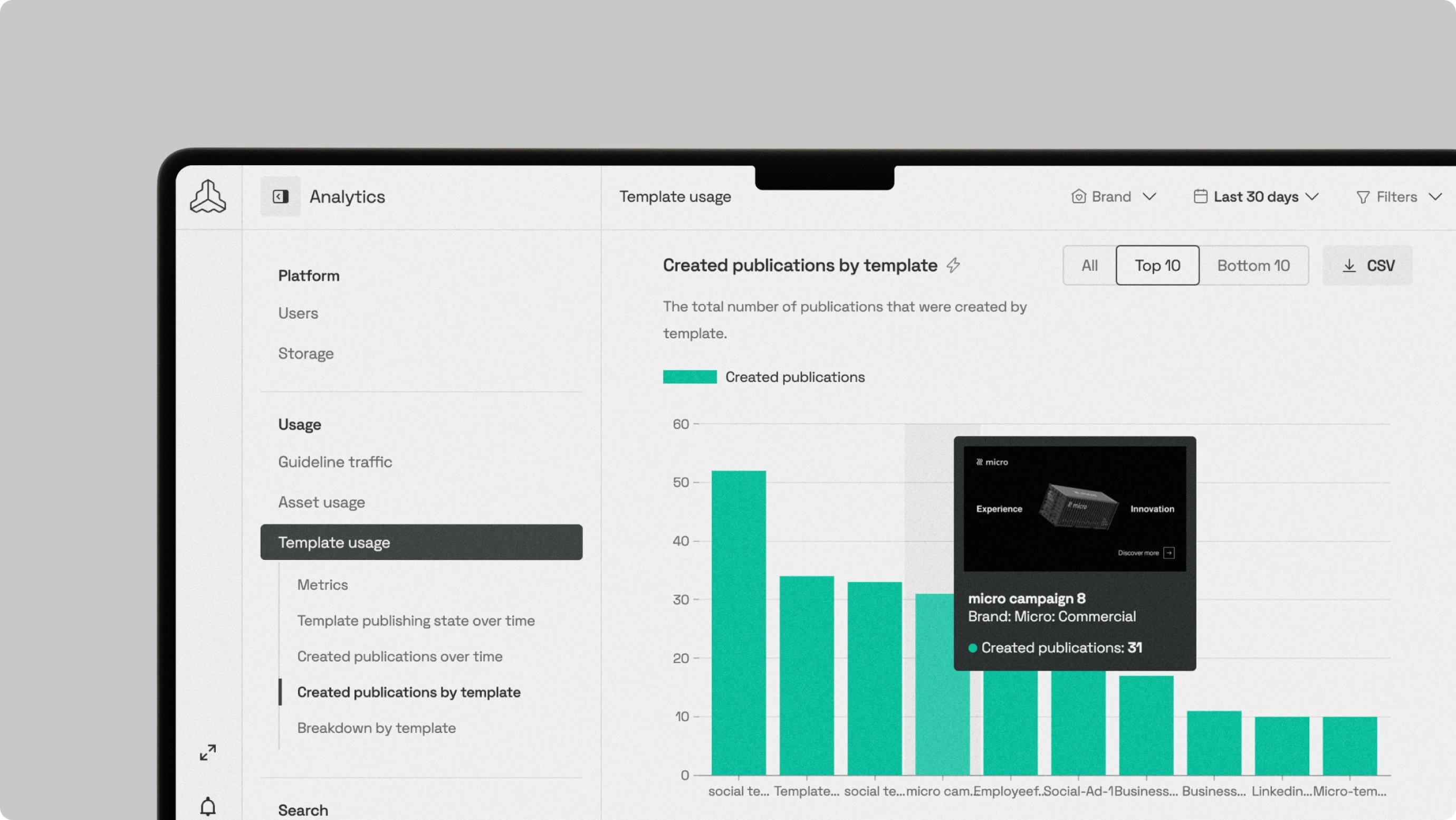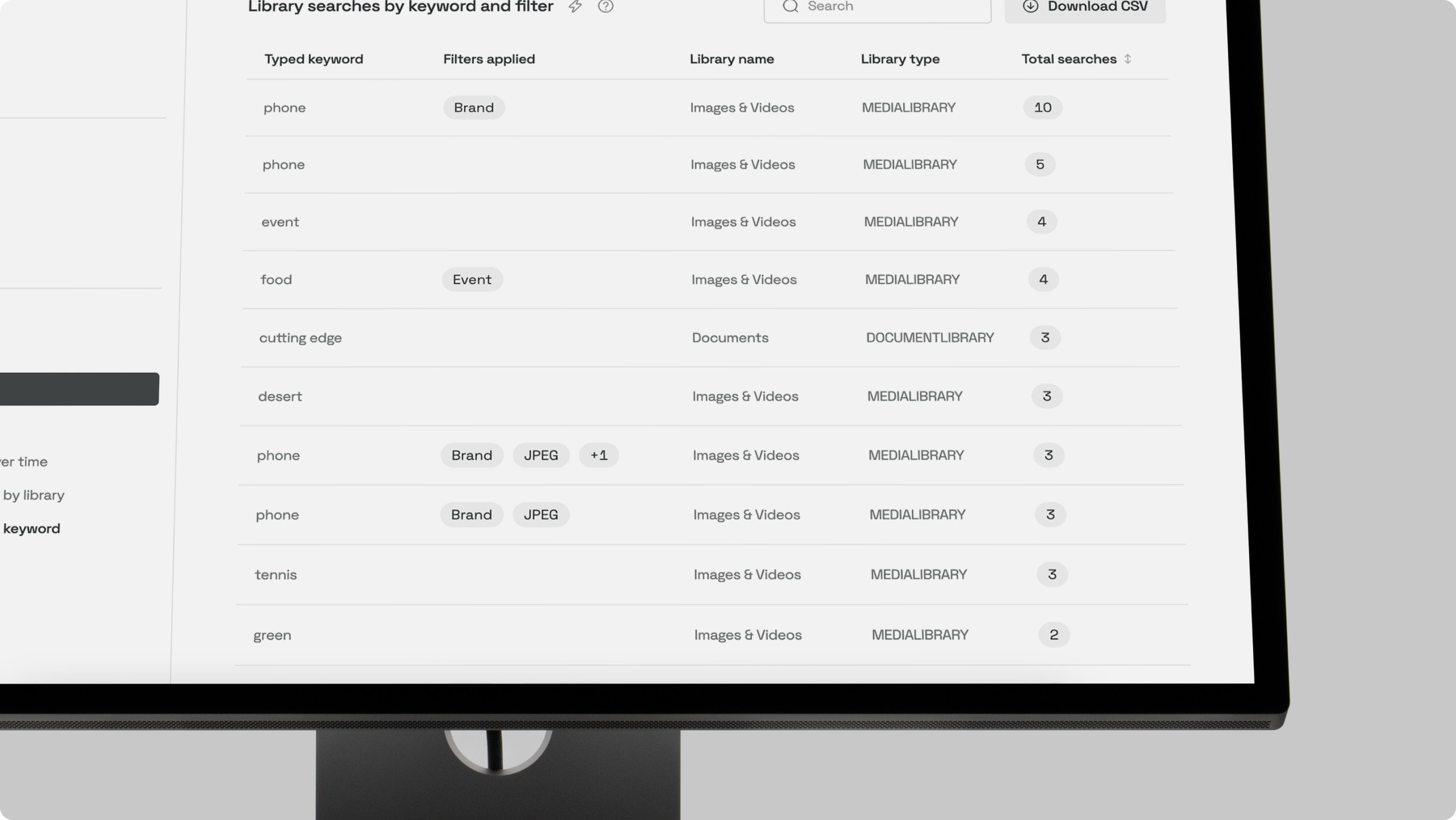Analytics
Transform data into decisions
Track how your team works with your resources to optimize processes and drive efficiency.

Overview
Achieve more with usage insights
Monitor how teams use brand resources to gain insights on budget allocation, content performance, and software integration.
Brand guidelines insights
Monitor your brand's impact through page views, unique visitors, active authors, and user engagement analytics.
Performance metrics
Check how your content is used — from access and downloads to sharing and version updates.
Template analytics
Measure template performance and distribution to understand what resonates with your teams and partners.
Visualizations
A chart says more than 1,000 words
Visualize your data and share the dashboards with your stakeholders to show adoption, streamline workflows, and maximize productivity.
“In brand management, data is your roadmap to consistency and impact. With Frontify analytics, you get a clear, detailed picture of how your assets, guidelines, and templates are being used, helping you make smarter decisions.”
– Jordan Giesler, Creative Director at Kansas City Chiefs
Capitalize on new opportunities
Discover which resources resonate with your teams and audiences: Unlock areas for content development, reuse, and localization to make sure your content creation pays off.
Strengthen consistency and collaboration
Track how markets manage, (re)use, and scale guidelines, assets, and templates to drive efficiency.
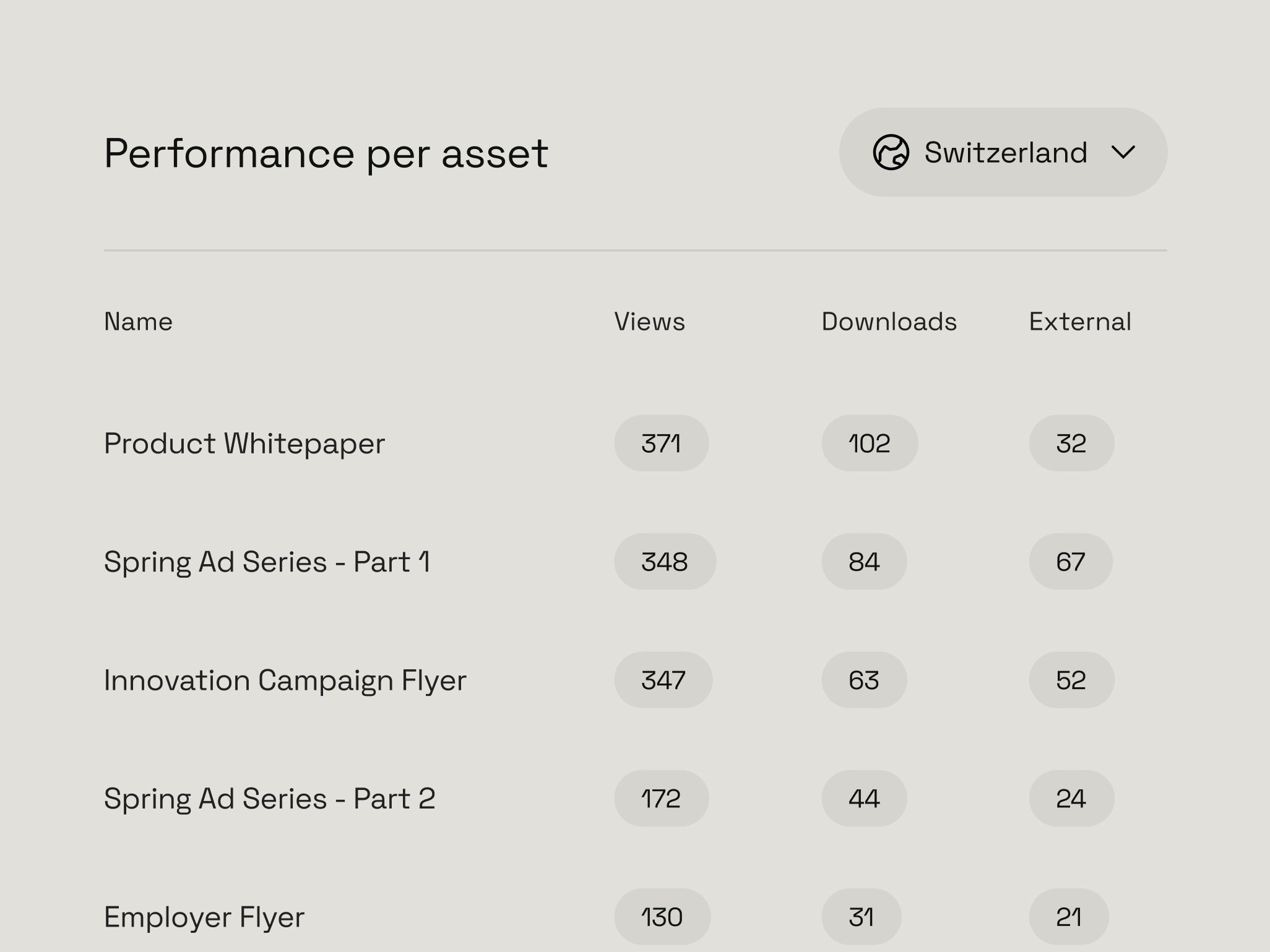
Maximize platform performance
Uncover opportunities to boost adoption, streamline workflows, and optimize budgets.
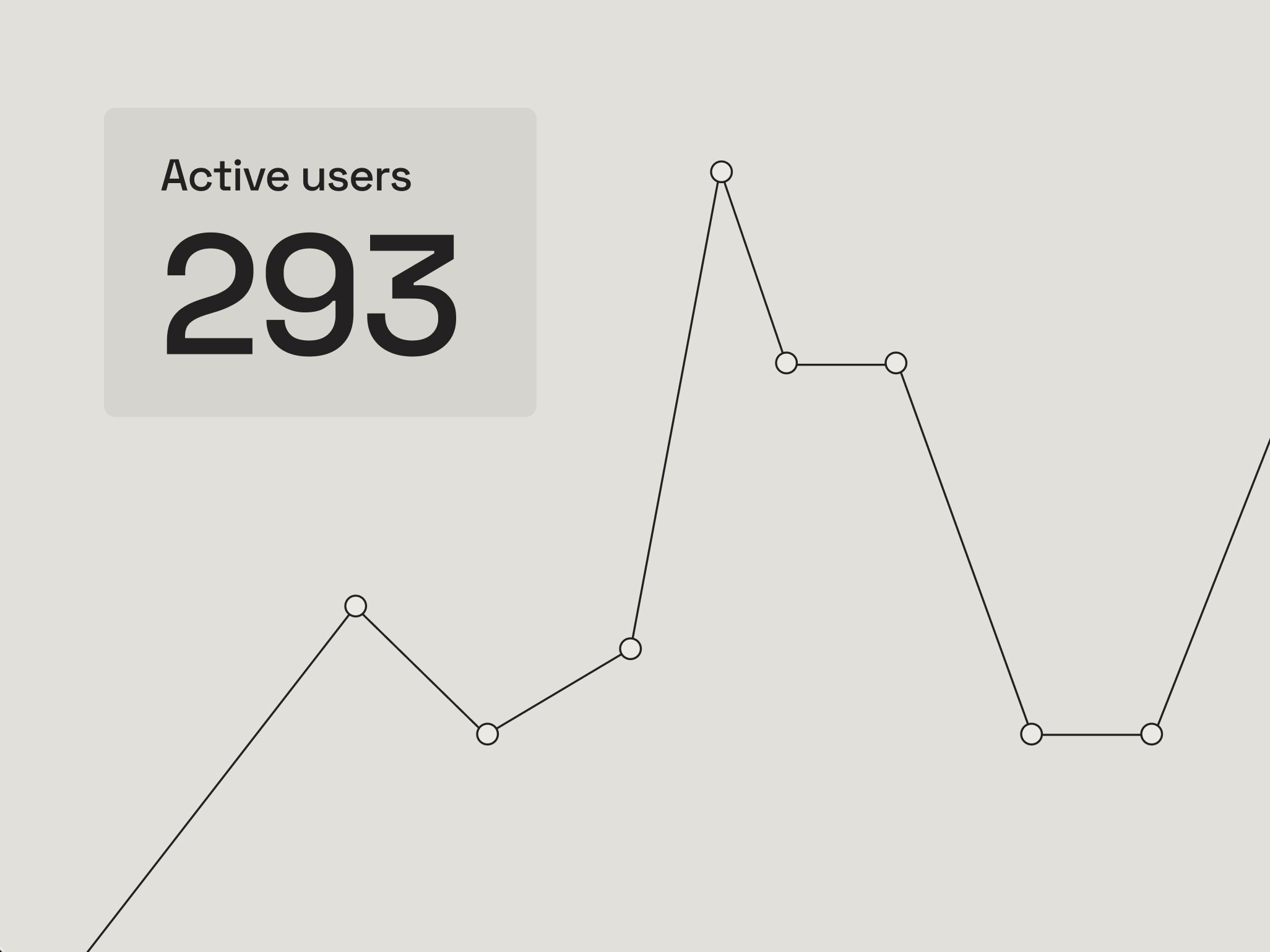
Create brand transparency
Build a comprehensive audit trail of all actions taken within the system to empower data-driven decisions and compliance.

Maximize your brand assets
Drive brand consistency, collaboration, and efficiency — with Frontify.
